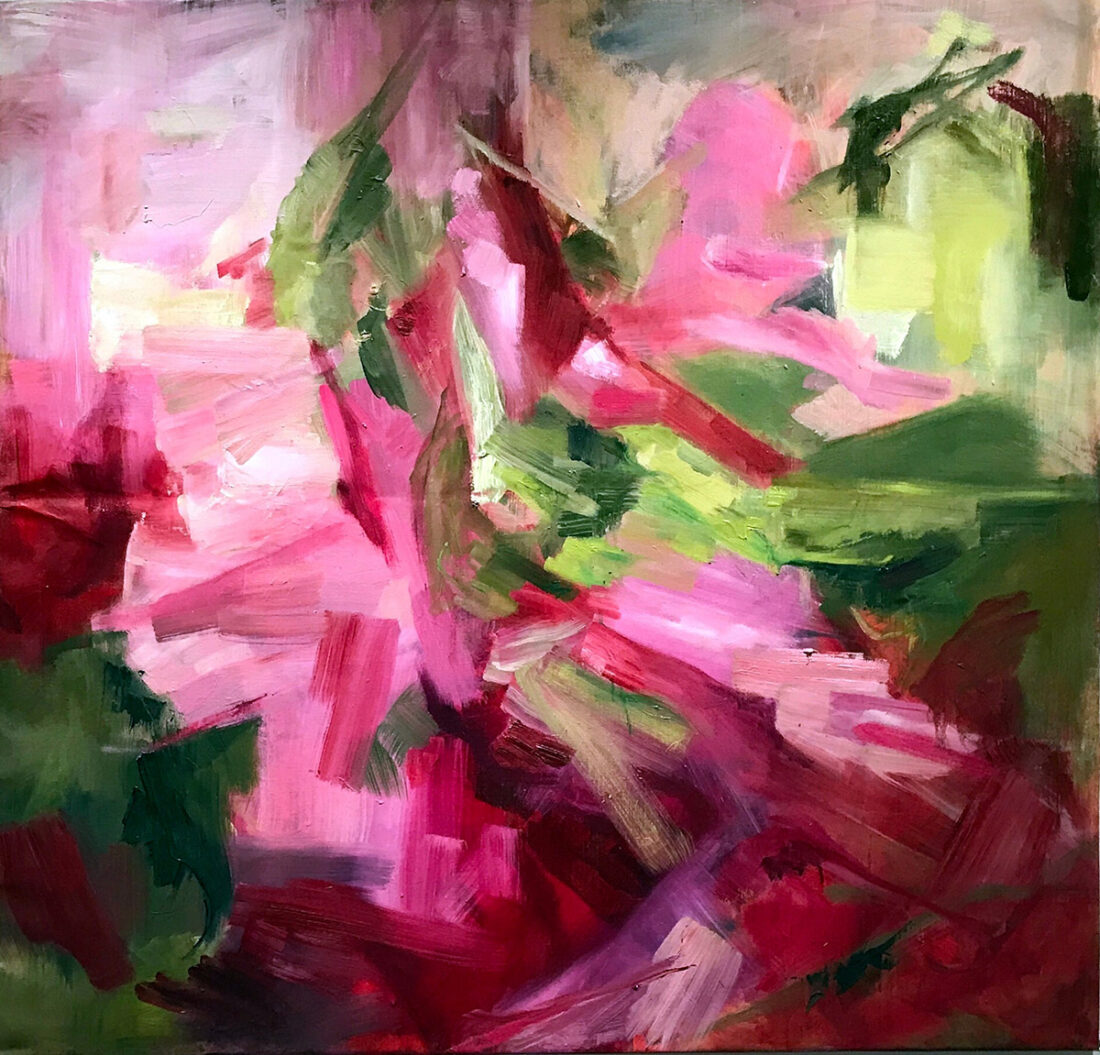Arts & Mental Health: An Interview With Jessie Burnes
Jessie Burnes is a Chicago based painter. Raised in Kansas City, Jessie received her BFA in Painting at Kansas State University in 2018. She then went to complete her Post-Baccalaureate certificate in Painting at The School of the Art Institute of Chicago in 2019. Jessie is currently an MFA candidate in Painting at The School of the Art Institute of Chicago.
Before Jessie’s time in graduate school at SAIC, she participated in the undergraduate painting program at Kansas State University. Her work in her undergraduate studies focused on abstracted floral imagery with a subtext on trauma and abuse. Now, in her graduate studies, she has taken those ideas further and has begun working symbols of grief from an art history aspect into her paintings.
Jessie has struggled with depression and anxiety disorders throughout her life from trauma in her early years. Like many artists, she turns to her artwork as a coping mechanism. Her paintings focus on directly studying the imagery and symbolism of floral arrangements and still-life art. Referencing paintings from the Dutch Golden Age, Jessie creates abstracted works tied to femininity and grief.
While the content of her work is not directly related to mental health, she uses the act of painting as a form of therapy. For Jessie the process of painting is directly correlated to mental health. Some artists have an image in their mind of what they want to create, which makes them “idea painters” but Jessie calls herself an “emotional painter” which is more of letting her artwork direct itself and her being a part of the process. One of her core beliefs is that you are ultimately unable to create art that doesn’t relate to yourself somehow. All artists put some of themselves into their work, whether they mean to or not. Regardless of what the contents of Jessie’s paintings are, mental health is a fundamental part of her life.
About a year and a half ago she experienced the devastating loss of her brother, whom she was very close to. After his death, she created a series of monotype prints. Typically monotypes are printed on a plastic gelatin surface, but Jessie created hers using Jell-o in a tin foil pan. Every time she pulled a print, portions of the Jell-o deteriorated. The process of not knowing what the print would look like after the continuous changing of the Jell-o base was therapeutic in itself. The image that she drew or painted on the prints was of a memorial bouquet of flowers that she received after her brother’s funeral.
During this series of monotype prints, Jessie was simultaneously studying the Theory of Memory and Dream Theory. The Theory of Memory essentially says that every time you recall a memory and as the neurons fire in your brain, the memory changes. This means that as you go on in life, your memories may deteriorate or change. Jessie has incorporated elements of this in her artwork as a process for herself more than for her viewers. She has also experienced recurring nightmares from past traumas which has inspired her to incorporate scribbles into her paintings to represent that she may never be able to unravel the trauma and it is still part of her life.
It is a natural human need to find answers, but sometimes life doesn’t work that way. For Jessie, art is less about the content of her paintings and more about the process of making the pieces. Their meaning resonates deeply with her battles with anxiety, depression, and trauma. Art is used as an essential tool to cope with mental health issues, not only in Jessie’s work but other artists as well. There are many artists who create artwork that has never been seen before because the entire purpose of their creation is to cope. Art is essential and creating artwork solely for yourself is crucial for your mental health.
You can see more of Jessie’s work on Instagram.




